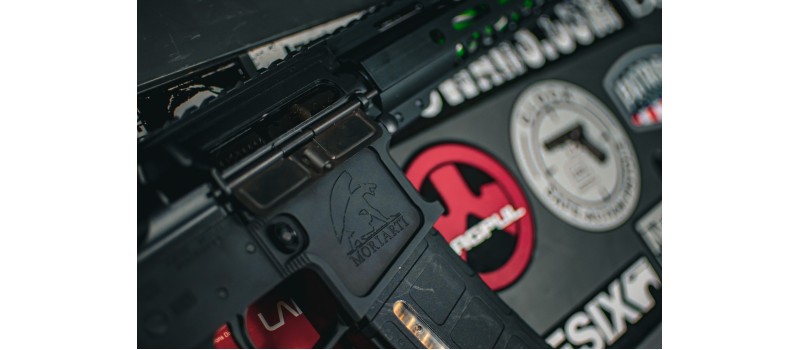Are you curious about the workings of an AR10 Lower Receiver? This blog post is for you! AR10 Lower Receivers are the foundation of any AR-10 rifle, and they are made to be reliable and durable. In this post, we will be exploring the ins and outs of the AR10 Lower Receiver, from its components and construction to its role in the assembly process. We will also be discussing the various brands and models available and what features to look for in an AR10 Lower Receiver. So, if you want to learn more about AR10 Lower Receivers, keep reading!
What is an AR-10 lower receiver?
The AR-10 lower receiver is a crucial component of an AR-10 rifle. It serves as the foundation upon which the entire firearm is built. But what exactly is an AR-10 lower receiver? In simple terms, it is the lower part of the rifle that houses the trigger, magazine, and other key components.
The AR-10 lower receiver is responsible for housing the fire control group, which includes the trigger, hammer, and disconnector. It also holds the magazine, allowing for the feeding of ammunition into the firearm. In addition, the lower receiver provides attachment points for the stock, grip, and other accessories.
The design and construction of the AR-10 lower receiver can vary, but they are typically made from durable materials such as aluminum. This ensures strength and reliability, while also keeping the overall weight of the rifle manageable.
Understanding the anatomy of an AR-10 lower receiver is essential for any firearm enthusiast. It allows for a deeper appreciation of the inner workings and functionality of the rifle. In the next section, we will delve into the various components and their roles within the AR-10 lower receiver. So, keep reading to learn more about this vital part of the AR-10 rifle.
Understanding the anatomy of an AR-10 lower receiver
Now that we have a basic understanding of what an AR-10 lower receiver is, let's dive deeper into its anatomy. The AR-10 lower receiver consists of several key components that work together to make the firearm function seamlessly.
At the heart of the AR-10 lower receiver is the fire control group. This includes the trigger, hammer, and disconnector. The trigger is responsible for releasing the hammer and initiating the firing sequence. The hammer strikes the firing pin, which then ignites the primer of the cartridge, resulting in a bullet being propelled out of the barrel.
Another important component is the magazine well, which houses the magazine. The magazine is where the ammunition is stored and fed into the firearm. The lower receiver also features attachment points for the stock, grip, and other accessories, allowing for customization and personalization.
Additionally, the lower receiver contains various pins, springs, and detents that hold everything together and ensure proper functioning. These components may seem small, but they play a vital role in the overall operation of the AR-10 rifle.
Understanding the anatomy of an AR-10 lower receiver is crucial for any firearm enthusiast or builder. It allows for a better understanding of how the rifle works and facilitates any necessary maintenance or upgrades. With this knowledge, you can appreciate the intricate design and craftsmanship that goes into making this essential part of the AR-10 rifle.
Material options for AR-10 lower receivers
When it comes to AR-10 lower receivers, one important consideration is the material from which they are made. The material choice can impact the durability, weight, and overall performance of the firearm. There are several common material options available for AR-10 lower receivers.
One popular choice is aluminum, which is known for its lightweight yet sturdy characteristics. Aluminum lower receivers are widely available and offer excellent strength-to-weight ratios. They are also corrosion-resistant and provide a stable platform for the other components of the rifle.
Another option is polymer lower receivers, which offer a more lightweight and affordable alternative to aluminum. Polymer lower receivers are often reinforced with fibers for added strength and durability. While they may not be as robust as aluminum, polymer lowers can still provide somewhat reliable performance.
Lastly, there are steel lower receivers, which are known for their strength and durability. Steel lower receivers are typically heavier than aluminum or polymer options but offer exceptional durability and reliability in return.
Billet vs forged lower receivers - which one should you choose?
When it comes to choosing between billet and forged lower receivers for your AR-10 rifle, there are a few key factors to consider.
Billet lower receivers are machined from a solid block of aluminum. This manufacturing process allows for greater design flexibility, resulting in sleek and intricate designs. Billet receivers often have unique features and aesthetic appeal, making them a popular choice for those who want a personalized and eye-catching firearm. Additionally, the machining process ensures precise tolerances and excellent fitment of other components.
On the other hand, forged lower receivers are made by shaping and compressing heated aluminum into a desired form. This process creates a stronger and more durable receiver, as the compression aligns the aluminum's grain structure, making it resistant to stress and wear. Forged receivers are also generally more affordable than billet options.
Ultimately, the choice between billet and forged lower receivers depends on your priorities. If you value customization and design options, a billet receiver may be the way to go. If strength, durability, and affordability are your main concerns, a forged receiver may be the better choice. Consider your personal preferences, budget, and the intended use of your AR-10 rifle when making this decision.
Selecting the right lower receiver for your build
Now that you have a good understanding of what an AR-10 lower receiver is and the different material options available, it's time to dive into the exciting process of selecting the right lower receiver for your build.
When choosing a lower receiver, there are a few key factors to consider. First and foremost, you need to determine your budget. Lower receivers can vary in price depending on the material, brand, and additional features. It's important to set a realistic budget and stick to it.
Next, think about the intended use of your AR-10 rifle. Are you planning on using it for long-range shooting, hunting, or self-defense? Different lower receivers may have specific features or configurations that cater to these different purposes. Consider your needs and preferences to ensure you select a lower receiver that aligns with your shooting goals.
Another important consideration is compatibility. Ensure that the lower receiver you choose is compatible with the other components you plan to use in your build. Check the specifications and do your research to make sure everything will fit together seamlessly.
Lastly, don't forget about aesthetics. Lower receivers come in a variety of finishes, colors, and designs. If personalization and visual appeal are important to you, choose a lower receiver that matches your style and preferences.
By taking these factors into account, you can select the right lower receiver for your AR-10 build. Remember to do your research, read reviews, and consult with experts if needed. Happy building!




